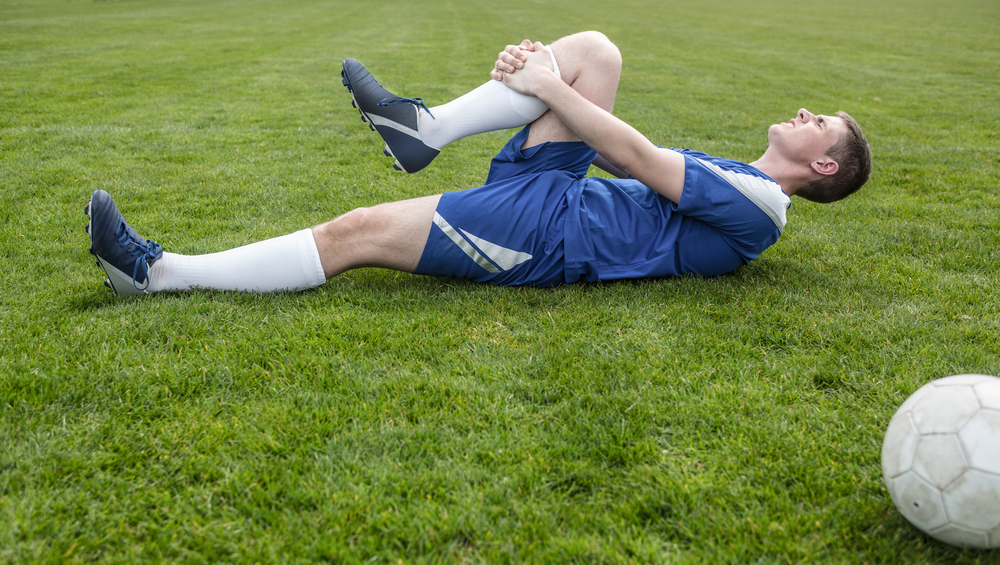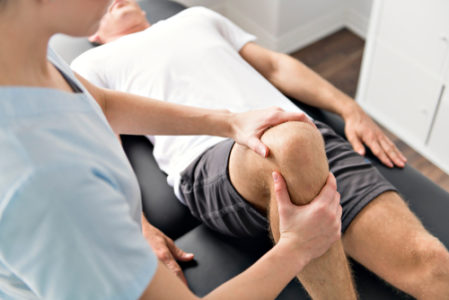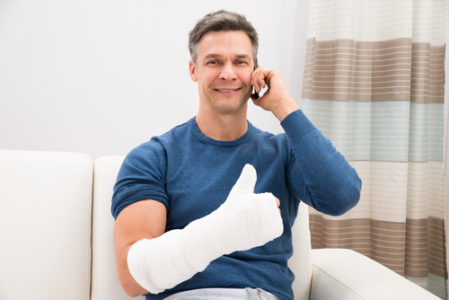
Let’s face it: sports injury recovery is no easy feat. Depending on the severity of the injury, it can take weeks, months or even years. However, before the recovery process, it’s important to be sure that you are receiving treatment for the appropriate condition. Accurate diagnosis is a critical aspect of treating and healing an orthopedic injury.
At Central Orthopedic Group, we treat patients with every ailment from ankle sprains to adult degenerative sciatica. Essentially, we guide them through the recovery process. Read on to learn why proper diagnosis is the key to effective sports injury treatment.
1. Best Treatment From the Outset
After receiving an injury, taking quick action is critical. The longer you go without treatment, the more painful and arduous the recovery process will be. When you consult with a specialist right away, you’re guaranteeing much smoother treatment and healing.
If you feel swelling above your foot, it’s logical to assume you sprained your ankle, and rest. However, for athletes who’ve had past ankle sprains, this may actually be an impingement issue. Therefore, the physical therapist or orthopedist will generally have specific advice for each condition. A professional diagnosis in a clinical setting will dictate the correct treatment strategy.

2. Ruling Out Related (or Unrelated) Conditions
While understanding the injury you have, it’s equally important to understand which conditions to eliminate. At first, this may seem like a pointless way to navigate the treatment process. However, knowing the condition that you don’t have is actually pretty important for a few reasons.
First, it enables the orthopedist to make a more informed choice about the treatment process. For example: if the orthopedist confirms that your leg pain is unrelated to a spinal condition, then epidural injections won’t be part of your treatment.
In addition, it allows the orthopedist to consider conditions that are similar, but not exactly the same. This allows them to think about the symptoms, and take a stronger approach to identifying the issue.
3. Avoid Reliance on Medication
Taking a painkiller is a common response to detecting abnormally strong pain. As an initial reaction, this measure makes sense. But, continuing to rely on medication will only create a problem, and certainly does not offer a solution.
Painkillers do nothing to permanently solve your sports injury problem. So, receiving a diagnosis from a qualified orthopedist is imperative. Rather than delaying the recovery progress altogether, receiving a diagnosis enables you to be on the right track, immediately.
4. Distinguish Between Standard Soreness and Injury, and React Accordingly
When you feel that your injury has gone beyond simple soreness, you should act. Social pressures from peers might dictate that you should never submit to the pain. And, while this mantra is helpful for strengthening your determination, be careful to not take it too seriously.
If you experience serious pain while lifting, jogging, playing football or doing any other physical activity, consult an orthopedic professional. Somebody trained to identify injuries will be able to help you make the distinction between soreness and a serious condition. It’s common to feel sore after engaging in a taxing workout, but developing chronic pain is something else entirely.
The same principle also applies to delayed onset muscle soreness. This condition, which is more likely to affect you after several days of repetitive workouts, requires rest. So, seeking a diagnosis from an orthopedic professional will pinpoint the issue, and allow them to create a plan.

5. Stretching the Proper Muscles
Often, orthopedic massages can play a critical role in helping patients to recover from sports injuries. When the muscles are impacted, orthopedic massages and guided physical therapy can slowly re-orient the muscles. In fact, both stretching and massages can restore the muscle’s range of motion.
For example, when seeking to rebuild neck strength, there are a few exercises that are beneficial. One of these exercises involves rotating your head, and touching your chin to your chest in the process. However, before the orthopedist can recommend this exercise, recognizing that the neck is the issue is important. If you are stretching these muscles, when in reality you should be stretching your shoulder muscles, this could be a false road to recovery.
In a similar vein, avoiding potentially damaged muscles that may have been impacted by the injury is also important. For example, if your ankle muscles are out of use after a foot injury, then this is also an important part of the diagnosis to understand. Considering these factors, and approaching them with a degree of caution, is critical.
6. Receive the Proper Surgery (If Necessary)
When orthopedics and physical therapy cannot help you to properly regain your range of motion, or the injury is too severe, surgery may be the only feasible option. It seems obvious, but the orthopedist would need to be certain that surgery is the proper course, through a detailed diagnosis.
Thankfully, minimally invasive surgery procedures simplify the process, and limit the potential for injury. Using high-tech cameras, surgeons can clearly view the inside of the body on a monitor in real-time. With this technology, surgeons can then make calculated and deliberate incisions.
7. Prevent Injury Recurrence
The central goal of an orthopedics-focused recovery plan is to permanently eliminate the pain. Toward the beginning of the injury, taking pain medication might be a sensible thing to do. However, minimizing the pain through painkillers will only be a viable strategy for some time. In order to resume your standard course of action, you need to undergo a full recovery. Orthopedic treatment offers patients a way to accomplish this when they receive a proper diagnosis.
However, it may take a substantial commitment on your part. After your orthopedist tells you that you have passed the threshold of recovery, the journey will likely not be over. Your orthopedist will likely recommend a variety of exercises for you to do on a regular basis. With time, your body will gradually recover. But, without a continued focus on maintaining this newfound strength, your body could regress.

Orthopedic Treatment
At Central Orthopedics, our goal is to help you recover from your sports injury quickly and permanently. Our knowledgeable team of specialists will use a strong knowledge of orthopedic conditions and recovery techniques to help you. Contact us to start the recovery process today.
